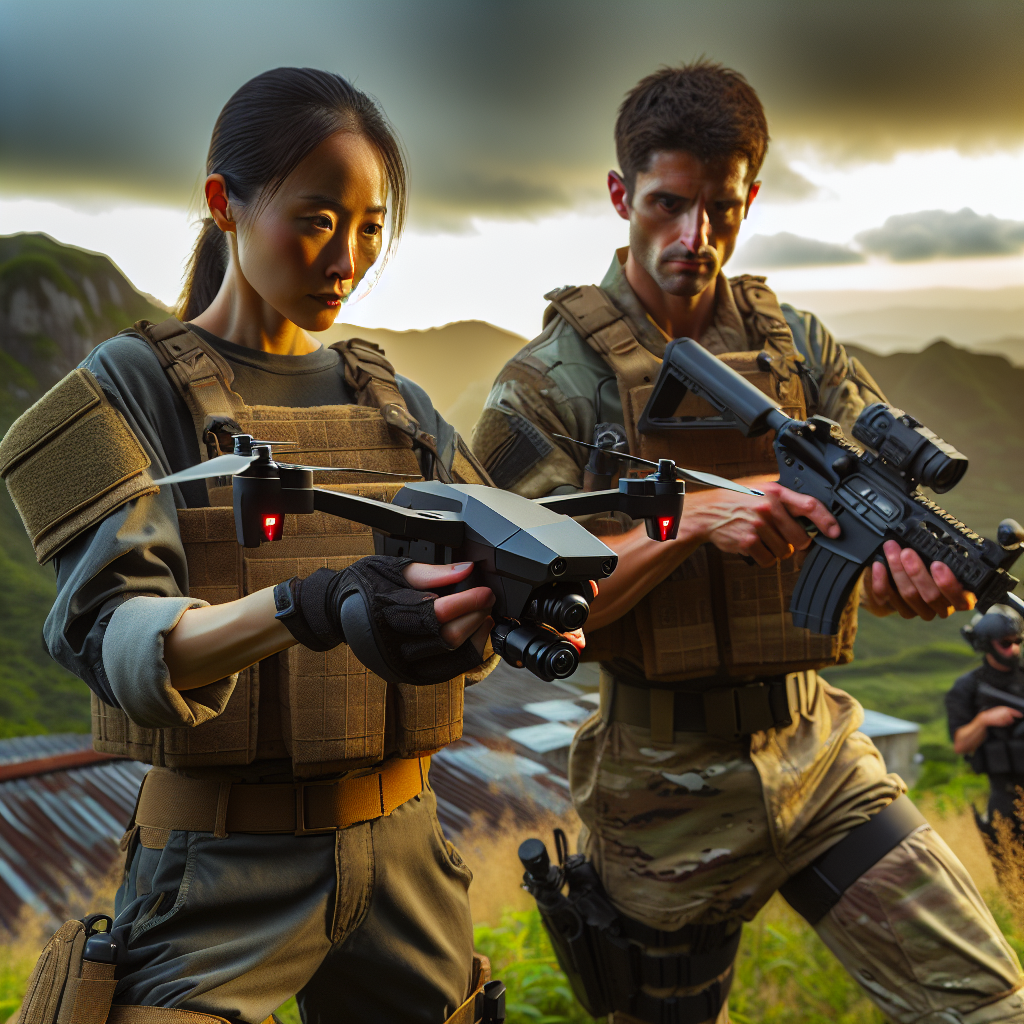Special forces from the US and Taiwan conducted joint training in Kinmen and Penghu, working together to operate the Black Hornet Nano Drone! This pocket-sized weapon is compact and discreet, with high-definition night vision capabilities, enabling covert reconnaissance of enemy positions, giving anti-terrorism and special forces an edge. Will Taiwan introduce it? How can it enhance military capabilities? Can it truly change the battlefield situation?
The miniature drone seen in the footage is the popular Black Hornet Nano Drone commonly used by US and NATO forces, originally developed by the Norwegian company Prox Dynamics and acquired by an American company in 2016.
Recently, the US Special Operations Forces Support Association reported on its official website that the US Special Forces, also known as the Green Berets, are conducting joint training with Taiwan’s special forces in Kinmen and Penghu using the Black Hornet Nano Drone. The Taiwanese military is considering procuring this small drone from the US. Today, let’s explore the features and capabilities of the Black Hornet Nano Drone and its potential uses.
The Black Hornet Nano Drone comes in multiple models, with the latest being the fourth generation.
The earlier models of the Black Hornet Nano Drone are extremely small, approximately 16 cm long, 2.5 cm wide, and weighing 18 grams with the battery. The drone is equipped with cameras that can transmit videos or static images to operators. It features three cameras – one forward-facing, one downward-facing, and one at a 45-degree angle. The drone kit includes two drones, a controller, a touchscreen panel for viewing the drone’s perspective. The drone’s battery can be charged to 90% in 20 to 25 minutes, offering a flight time of approximately 25 minutes. This setup allows for uninterrupted use of the drones, with one in flight and the other charging.
A newer version of the Black Hornet with night vision capabilities has been introduced, capable of transmitting high-resolution images within a range of 1.6 kilometers.
The latest version is the Black Hornet 4, which has an increased length with rotor length at roughly 19 cm and overall length around 25.5 cm, weighing 70 grams with upgraded electronic equipment. It has two cameras – one optical camera on top and an infrared imaging camera below, using a high-quality QRB 5165 processor. This compact drone can silently navigate any space undetected by enemies, featuring automatic collision avoidance and a flight time of up to 30 minutes.
A video released by the US Army demonstrates how frontline soldiers operate the drone. The small drone can be held in the palm of a soldier’s hand, starting the rotor and launching it to the desired location. A remote controller connected to a touchscreen display is used for navigation. After completing the mission, the drone can return to its starting point, easily retrieved by soldiers and stored in the compact kit.
Six years ago, a video from a defense exhibition showcased how the Black Hornet Drone is operated. It can be controlled manually or via navigation for predetermined routes, demonstrating its adaptability and ease of use in various scenarios.
In addition to individual use, the drone can be integrated into weapon systems, such as tanks or armored vehicles, using modular Black Hornet launchers. The official video highlights how multiple drones can be carried and operated simultaneously for missions.
The primary use of this drone on the battlefield is for reconnaissance and surveillance, particularly suitable for special operations. Various militaries have utilized drones extensively in conflicts such as the ongoing Ukraine crisis for reconnaissance and target identification. The compact size of the drone makes it ideal for special forces operations.
Another video released by the company shows counter-terrorism units using the drone for reconnaissance to overcome enemy strongholds and eliminate terrorists, showcasing its utility in urban environments for intelligence gathering.
If Taiwan acquires this mini drone in the future, it would likely be primarily for special forces use. For larger army deployments, cheaper commercial drones may suffice economically, making the compact Black Hornet preferable for specialized operations.
While the drone appears promising, its drawback is the relatively high cost. The price range for a set of Black Hornets varies from tens of thousands to over a hundred thousand US dollars, reflecting different models and classifications impacting pricing. Considering the expense, it may present challenges for widespread adoption.
To date, over 45 countries have procured more than 33,000 sets of Black Hornet Drones, indicating its significant market presence among NATO countries and beyond.
What are your thoughts on whether Taiwan’s special forces should introduce the Black Hornet Nano Drone?
Subscribe to “Exploring Time and Space” YouTube channel:
[Link]
Subscribe to GJW channel:
[Link]
Subscribe on Instagram:
[Link]
Donation link:
[Link]

